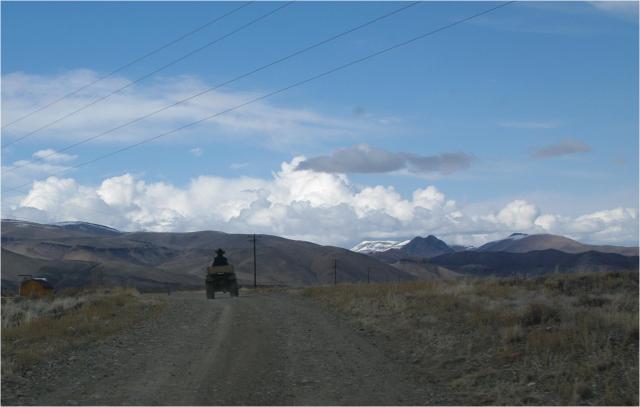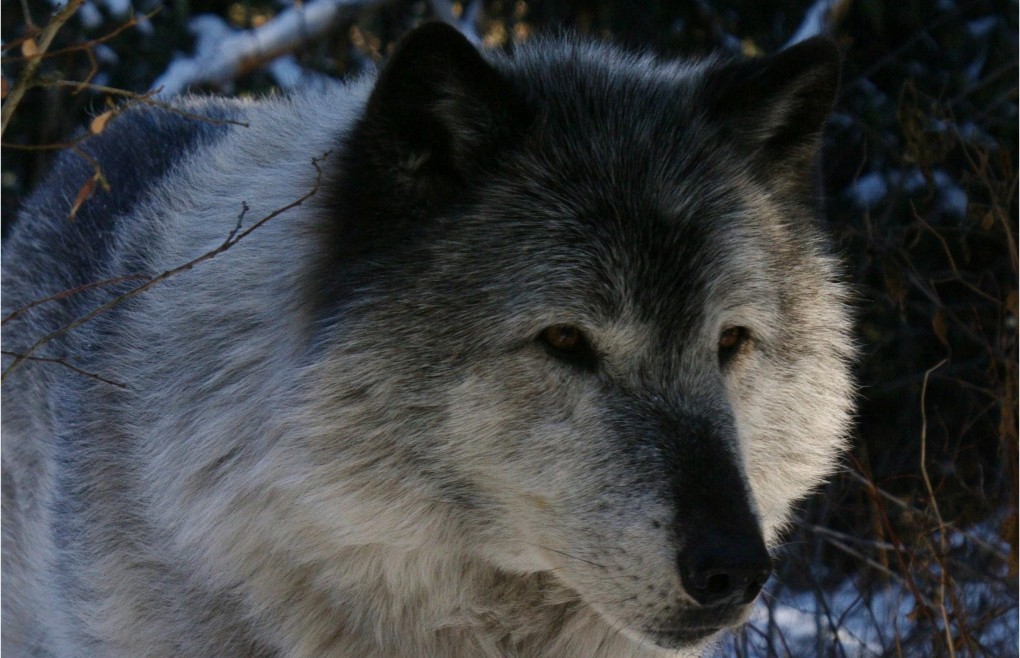
The wolf seems to embody all that is extreme, and thus, brings out the extremes in extreme people. The media likes to discuss these extremes because they make good stories. Quiet people with opinions about wolves stay quiet to avoid the noise. All this noise, is it really all about wolves? In conducting interviews in central Idaho for the fieldwork portion of my thesis, I found myself wondering which problem is truly larger: opposing interest groups regarding wolves, or, actual wolves. Who creates more problems: the people or the predator?
I asked a prominent Idaho rancher this question in an interview. As we gazed out of the back window of his home, he pointed to the exact location where wolves were first released, just past his grazing cattle and beyond two mountain peaks. This man has encountered many wolf depredations on his cattle and feels that our predecessors knew what they were doing when they eradicated this predator. Yet he answers my question without hesitation, “people”. People in opposing interest groups have undoubtedly created more problems for him than wolves have. In a separate instance regarding the same question, a woman working for conservation efforts known to actively protect wolves in central Idaho writes to me saying that she has “never seen an issue bring out the worst in people like wolves do”.
The rancher mentioned above has experienced extensive harassment over the past few years. He has had certain conservation activists’ howl at his grazing cattle with the intention to spook them. At one point, someone opened one of the gates to an enclosure where his cattle were grazing and spooked them right out onto a highway in the night. The rancher recognized the car that was parked nearby and was almost positive he knew who did it. After his daughter and son-in-law were followed home one night from the ranch they decided ranching was not for them. “As if ranching isn’t hard enough already”, he says.
Problems caused by actual wolves don’t seem to be so much about the money lost due to wolf depredations as it is about not being able to protect their cows from grueling deaths. Wolves don’t go for an immediate kill. They wear the animal down by running it and often eat it while it is still alive. Ranchers watch over their cattle closely, investing long hours of their days to these animals. On most ranches, the cattle are the first thing you see out your window in the morning and the last thing you see out your window before dark. Choosing to ranch is far more than a financial investment; it is an emotional investment in a lifestyle, family, animals and a home, hopefully for generations to come. It is a threatened culture. For ranchers that care for their livestock the way they should, not being able to protect their cattle from this type of death hard to bear.
Many ranchers that focus on quality feel as though their way of life is endangered, and they have lost a big battle with the wolf reintroduction. The cattle industry, in general, has been under attack for its inhumane practices and poor quality of product. Smaller ranches that take good care of their livestock, as well as the land, have trouble competing with large corporate type ranches who require specific husbandry practices that ultimately diminish the quality of life for everything (but this is an entirely separate issue). As if this isn’t enough, some conservation efforts go so far as to support wolves simply as a way to move ranchers off of public land. This skillfully displaces anger onto wolves, although, hatred toward this predator is not hard to come by, especially from ranchers.
The idea that the wolf is nothing more than the thug and the thief of the forest is more prevalent than the predator itself. Wolves are apparently everywhere killing everything; wiping out all other animal populations while their own numbers continue to grow. A friend of mine who works for the forest service out of McCall, Idaho was a bit weary of my intentions at first, possibly pegging me as another wolf fanatic. He later opened up saying “people say they’re everywhere, but no one ever sees any.” This is of course part of the problem; they are hard to catch, but definitely something to think about.
